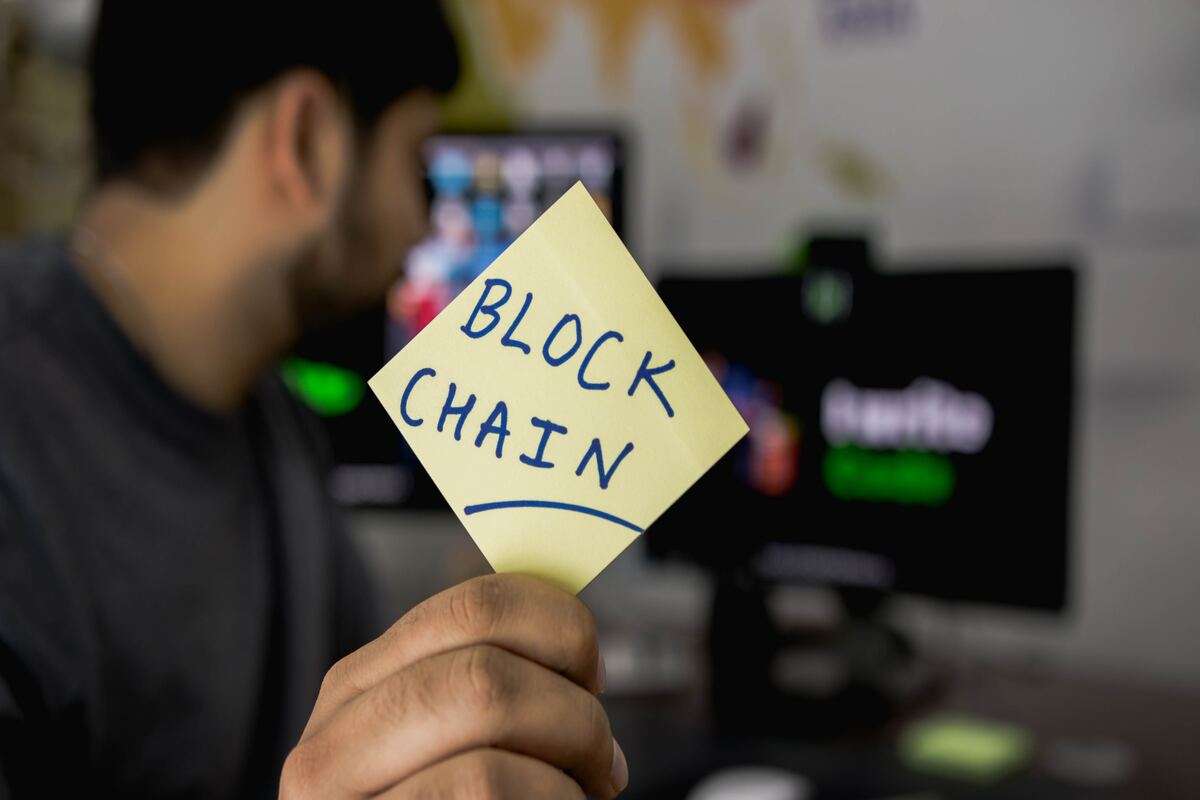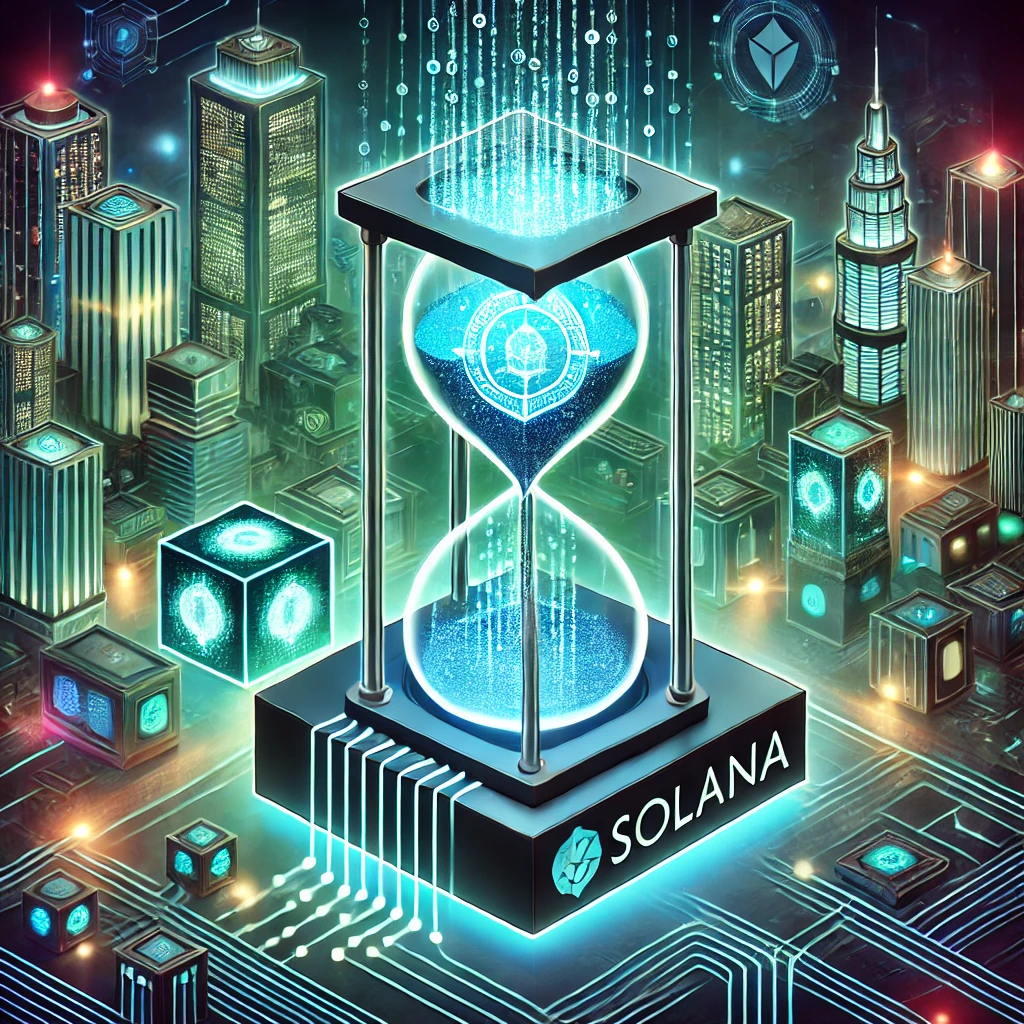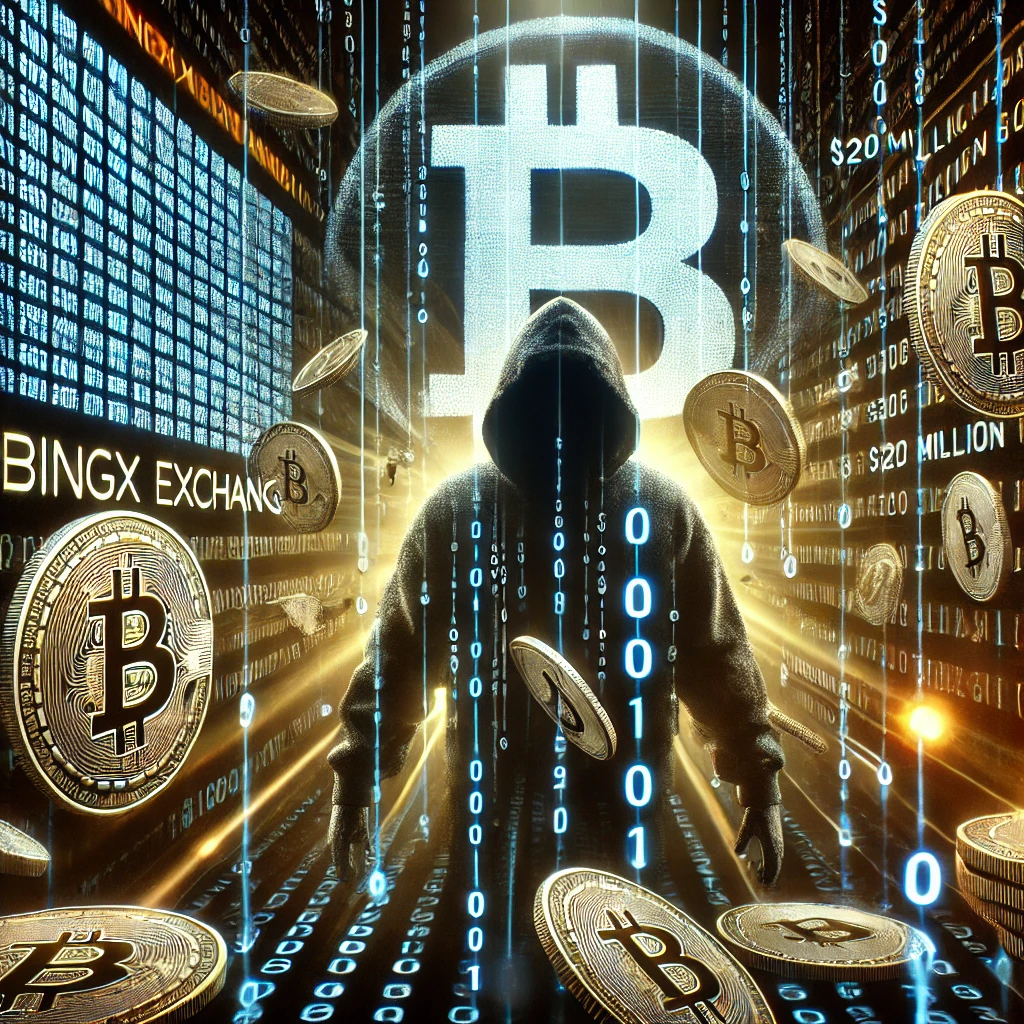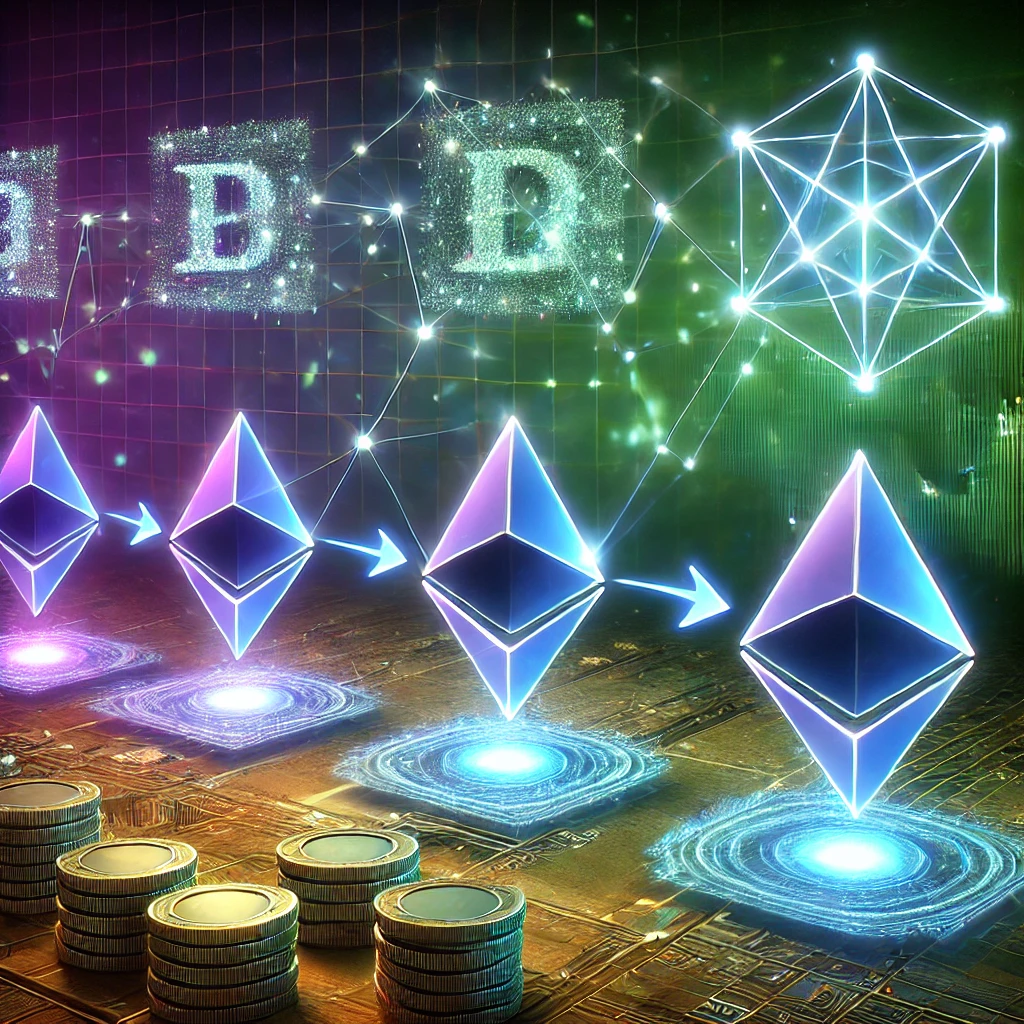
Estimated reading time: 8 minutes
Blockchain technology is changing the game in today’s digital landscape, revolutionizing how we carry out transactions, share data, and ensure security. Its importance cannot be emphasized enough, as it addresses crucial challenges in data management and trust-building..
The main thing about blockchain is that it’s decentralized, meaning the data is kept safe on a bunch of computers. This stops one person or group from having all the control, making it harder to mess with the information or cheat. This idea has been used in many ways beyond just making cryptocurrencies like Bitcoin.
Table of contents
What is Blockchain?
Blockchain technology is a revolutionary innovation that has transformed the way we record and verify transactions across various industries. Its transparency, security, and immutability make this decentralized ledger system well-known.
Definition of Blockchain Technology
Blockchain is a distributed and immutable ledger that enables the secure recording of transactions and the tracking of assets across a network of computers. It consists of a chain of blocks, each containing a list of transactions. Linking together, these blocks form a chronological and unchangeable record of all transactions.
How Blockchain Works
Blocks: Blocks group transactions, and each block is assigned a unique identifier known as a cryptographic hash. This hash is based on the content of the previous block, ensuring the integrity of the chain.
Decentralization: Unlike traditional centralized systems, blockchain operates on a decentralized network of computers (nodes). Each node possesses a copy of the entire blockchain, and consensus algorithms validate and add new transactions to the ledger.
Consensus Mechanisms: The blockchain maintains the integrity of transactions by employing various consensus mechanisms, such as Proof of Work (PoW) and Proof of Stake (PoS), to validate them.
Immutability: Cryptographic hashing and the decentralized nature of the network achieve immutability once a transaction is recorded in a block and added to the blockchain, making it virtually impossible to alter.
Transparency: All participants in the network can view and verify transactions, enhancing transparency and trust.
Blockchain isn’t just for things like Bitcoin; it’s used in many other areas like supply chain, healthcare, and finance. In supply chain, for instance, blockchain helps keep an eye on goods as they move, stopping cheating and making sure products are real.
Also read: What You Should Know About Bitcoin
Key Features of Blockchain
Blockchain technology boasts several key features that set it apart from traditional data management systems. These features include immutability, transparency, and security, which are instrumental in its widespread adoption across various industries.
Immutability
One important thing about blockchain is that once a transaction is put on it, it can’t be changed. This is because of cryptographic hashing, which creates a unique code for each block based on the one before it. This makes it really hard to mess with or delete transactions. If someone tries to change one block, they would have to change all the blocks after it, and that’s really tough because of how spread out and decentralized blockchain is. This keeps the information and history of transactions safe and dependable.
Transparency
Blockchain is made to be easy for everyone in the network to see and use. All the transactions on the blockchain can be seen by every part of the network, making it a trustworthy and responsible system. This transparency is important in areas like supply chain, money, and healthcare. People involved can see what’s happening right away with things like goods, money, or patient information. Users can check transactions on their own, which cuts down on the need for middlemen and the chance of cheating.
Security
Security is a very important part of blockchain. The structure of blockchain networks, lacking central control and employing robust codes, makes them highly resistant to unauthorized access or hacking. Proof of Work (PoW) or Proof of Stake (PoS) are methods used to validate transactions, ensuring that only the correct ones are added to the record.
Blockchain in Practice
Blockchain technology, which used to be limited to cryptocurrencies, has transformed into a versatile tool with applications across various industries. Its key features like transparency, immutability, and security makes it a valuable asset in many sectors.
Finance
In the financial industry, blockchain has transformed operations such as cross-border payments, trade finance, and asset tokenization. For example, Ripple’s blockchain solution facilitates quick and affordable international money transfers in real-time. Platforms like Polymath, which tokenize assets, use blockchain to represent ownership of physical assets, making it simpler to trade traditionally hard-to-sell assets such as real estate.
Healthcare
Hospitals are using blockchain to keep patient records safe, make it easier for different systems to share information, and fight against fake medicines. MedRec, a system that uses blockchain, lets patients have control over their medical records, keeping them private and easy to get. VeChain uses blockchain to track the entire journey of real medicines, ensuring patient safety from manufacturing to distribution.
Supply Chain
Blockchain’s transparency and traceability are invaluable in supply chain management. Companies like IBM Food Trust employ blockchain to trace the origin of food products, reducing the risk of contamination and fraud. Similarly, Everledger uses blockchain to track the provenance of diamonds, combatting the trade of conflict diamonds.
Government and Bureaucracy
Blockchain can make government work better by making things clearer and getting rid of things that don’t work well. In Dubai, they want the whole city to run on blockchain by 2020. They’re using it in areas like healthcare, education, and transportation. Estonia is using blockchain in its e-Residency program, so people from other countries can use government services online in a safe way.
Energy and Utilities
Blockchain is also transforming the energy sector. Grid+ employs blockchain to provide consumers with direct access to wholesale energy markets, potentially lowering electricity costs. Power Ledger enables peer-to-peer energy trading on a blockchain platform, increasing energy efficiency and sustainability.
Advantages and Challenges
Blockchain technology is getting a lot of attention because it could change many industries. It has good things, like making it harder to cheat and building more trust. But there are also problems, like making it bigger and using a lot of energy.
Advantages
Fraud Reduction: Blockchain’s transparent and immutable ledger reduces the risk of fraud. A network of participants records and verifies transactions, making it difficult for malicious actors to manipulate data.
Enhanced Trust: Decentralization ensures that no single entity has control over the network, promoting trust among users. This is especially valuable in scenarios where trust is crucial, such as supply chains and healthcare.
Data Security: Blockchain’s cryptographic techniques secure data, making it resistant to unauthorized access. Users have control over their private keys, enhancing security.
Efficiency: Smart contracts automate and streamline processes, reducing the need for intermediaries. This not only saves time but also lowers costs.
Challenges
Scalability: Blockchain networks like Bitcoin and Ethereum face scalability issues, with limited transaction processing capacities. As more users join, transaction speeds can slow down, hindering mass adoption.
Energy Consumption: Proof-of-Work (PoW) consensus mechanisms, used by many blockchains, require significant computational power and energy. This raises concerns about the environmental impact of blockchain technology.
Complexity: Implementing and maintaining blockchain solutions can be complex and resource-intensive. Companies need skilled professionals and resources to navigate this technology.
Regulatory Uncertainty: Governments are still adapting to blockchain, leading to regulatory uncertainty. This can create challenges for businesses seeking to comply with evolving regulations.
Future of Blockchain
Blockchain technology has evolved significantly since its inception, and its future holds exciting potential developments.
NFTs (Non-Fungible Tokens): The future of blockchain includes NFTs expanding into various industries, such as gaming, real estate, and education. These tokens offer unparalleled ownership and provenance tracking.
DeFi (Decentralized Finance): People anticipate that DeFi will grow more, adding creative financial products and services, possibly posing a challenge to traditional banking systems.
Also read: What is DeFi?
Interoperability: Blockchain interoperability is crucial for seamless communication between different blockchain networks. Projects like Polkadot and Cosmos are working on interoperable solutions, enabling assets and data to move fluidly across blockchains. This fosters collaboration and scalability.
Scalability Solutions: To solve blockchain’s scalability challenges, developers are working on projects such as Ethereum 2.0 and Layer 2 solutions.These aim to improve transaction speeds and reduce fees, making blockchain more accessible for mainstream adoption.
Sustainability: The adoption of eco-friendly consensus mechanisms like Proof-of-Stake (PoS) is addressing environmental concerns related to blockchain’s energy consumption. This shift towards sustainability will likely gain momentum in the future.
Supply Chain Integration: Blockchain’s transparency and immutability make it ideal for supply chain management. In the future, we can expect widespread integration of blockchain in supply chains, enhancing traceability and reducing fraud.
Government Adoption: Governments worldwide are exploring blockchain for various use cases, including identity management and voting systems. The future might see increased adoption of blockchain in public services, enhancing transparency and security.
Quantum Resistance: As quantum computing advances, blockchain’s security may be at risk. Future blockchain systems will likely incorporate quantum-resistant cryptographic techniques to safeguard against quantum threats.
Related post: What is Web3.0?
Frequently Asked Questions
Blockchain is a digital, decentralized ledger that records transactions across a network. It stores data in blocks that link together to create a chain.
It involves a ledger technology, where transactions record on multiple computers (nodes) in a network, powers blockchain. Consensus mechanisms confirms and add new transactions to the chain.
Bitcoin is a crypto and the first application of blockchain technology. It allows peer-to-peer transactions without the need banks.
Smart contracts are agreements that automatically carry out and enforce rules written on the blockchain.
DeFi, or Decentralized Finance, refers to financial services and applications built on blockchain technology, offering alternatives to traditional banking systems, such as lending and trading.
Discover more from The African Crypto
Subscribe to get the latest posts sent to your email.










